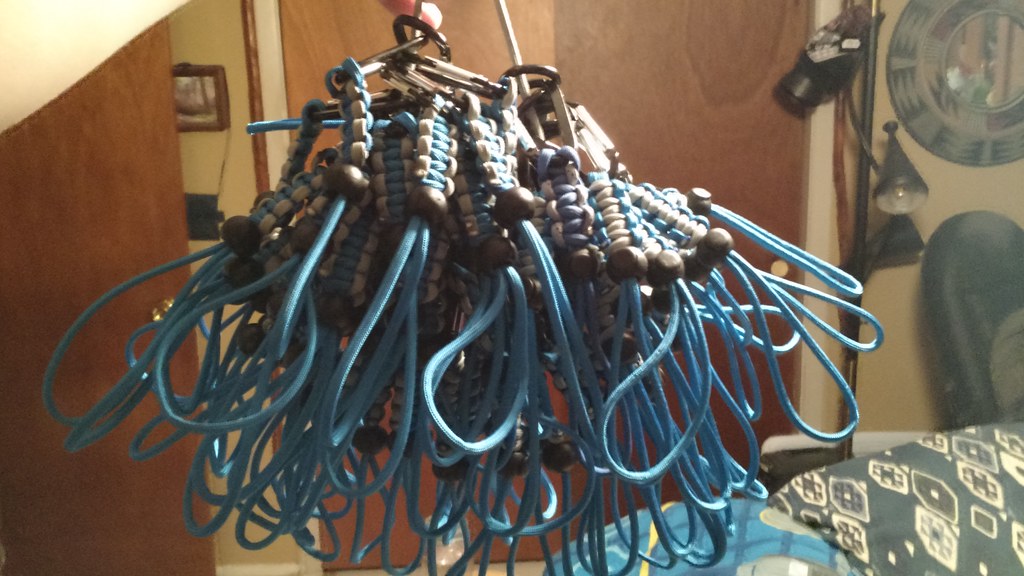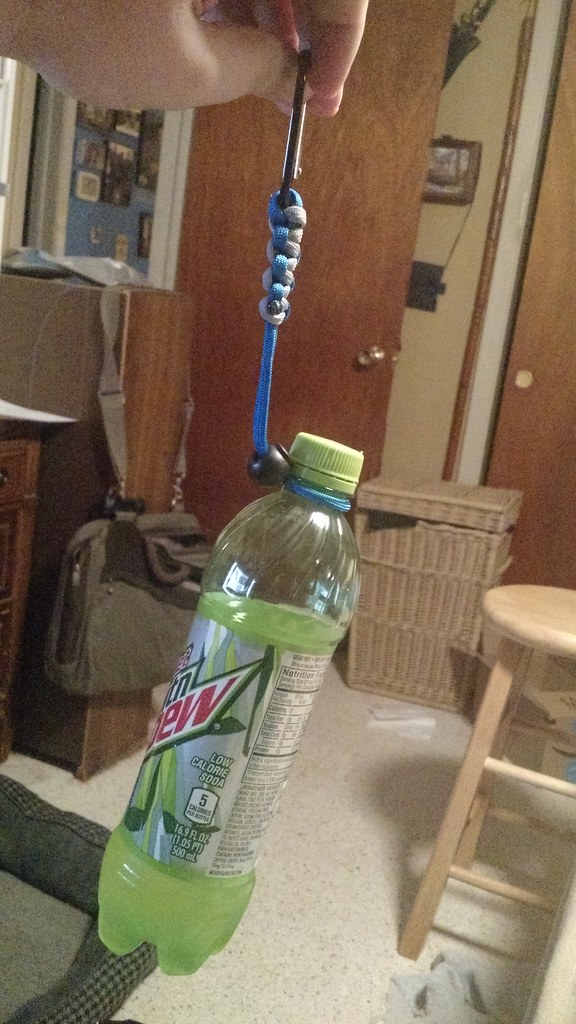17 November 2016
Speaking Of Paracord
I made 70 of these things for the "kids" at Challengers Bowling League here locally. The Lovely Harvey now runs it and The Boy is a participant.
I bought the cord I got based on the vendor coming up first on Amazon, having Prime eligibility, price and colors.
I got this stuff. Dakota Gear™ Genuine Type III 7-Strand 550 Paracord; in Electric Royal Blue and Sexy Silver Gray.
It is, according to the package:
1/8th inch diameter.
Proudly made in the U.S.A.
7 twisted inner strands.
Resists abrasion & tangling.
Break strength 550+ pounds.
Will not rot, mildew or fade.
100% polyester (as good or better than nylon).
This is a great example of the milspec not always giving you what you want. Why? Because the milspec calls out material in addition to performance. This cord could outperform genuine, milspec compliant cord, but would be rejected because it's polyester instead of "[N]ylon yarn in the manufacture of the cord shall be a bright, high-tenacity, light-resistant and heat-resistant polyamide prepared from hexamethylenediamine and adipic acid or its derivatives."
My color choices are outside milspec too, even if the things were made from the approved nylon!
Of course, the cheapest of cheap Chinese cord would have sufficed here. Max load expected is about three pounds for the biggest bottle we've seen someone try for this. The cheapo carabiner probably would fail before the cord at any rate.
I got snippy about the anodizing thing because it's performance I am looking for rather than adherence to the milspec.
In fact, the vendor I selected is uses a non spec process that exceeds it in performance.
Occasionally, milspec is a barrier to improved performance just because it's so difficult to amend. But that difficulty was built into it, to prevent it from being changed on a whim for no performance advantage.
1 comment:
You are a guest here when you comment. This is my soapbox, not yours. Be polite. Inappropriate comments will be deleted without mention. Amnesty period is expired.
Do not go off on a tangent, stay with the topic of the post. If I can't tell what your point is in the first couple of sentences I'm flushing it.
If you're trying to comment anonymously: You can't. Log into your Google account.
If you can't comprehend this, don't comment; because I'm going to moderate and mock you for wasting your time.


So about a decade ago or so I was the guy in charge of all POL products for my Sqn and we were in the process of sourcing products that were more environmentally safe and safer to use for the person. LPS and Dow Corning were also in the process of changing things up in a big way when it came to aircraft products. All of our maintenance manuals of course required us to use mil spec products but Dow looked at the sheer quantity of mil spec items they were producing (it was over 1000 items) and compared the mil specs. It was not too surprising what they found out about their product line. Many products were almost identical with just minor things like temperature use varying by only a degree or two. What they did was to take the superior mil specs and got rid of the rest. They brought down the total number of products to only around 100 or so (this was just the aircraft stuff; I never looked at any of their other products and of course this was a long time ago now). When I contacted LPS they told me that they were no longer making anything new to mil spec as the market was way too small. They were making all new products based on Boeing and Airbus requirements so if we wanted something new we had to buy products that met those standards. When I looked at what the standards were for those aircraft they were actually better than the old mil spec stuff. Plus it made LPS more money.
ReplyDelete